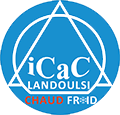It’s usually created by a project supervisor and presented to a group of stakeholders for approval. This is why the constitution is written throughout initiation, before the project’s kick-off. A frequent false impression is to consider that the project’s sponsor is totally answerable for writing the project charter. Change Control Board (CCB) – Established to review and approve changes and requests affecting design and construction in an effort to control costs, control scope adjustments, and supply historical knowledge for high quality assurance functions. The change implementer is the accountable individual for implementing approved changes. In some organizations, the change implementer is liable for closing the CR with the Change Supervisor.
- The CDCA could also be a Government exercise or a contractor, and the authority could also be transferred.
- The CDCA then again, pertains to specifications or any different kind of document and is independent of the organization that bodily maintains and stores the document.
- In some organizations, the change implementer is answerable for closing the CR with the Change Manager.
- The function is to make sure that no pointless modifications are made, all modifications are documented, providers aren’t unnecessarily disrupted and resources are used efficiently.
To impact change to a product, step one is the revision of the paperwork defining the product. The concepts mentioned below facilitate carrying out this step, using automated instruments such as a CM AIS. This handbook views these ideas from each program administration (macro) viewpoint and the doc control (micro) point of view. Change control is the method via which all requests to alter the permitted baseline of a project, programme or portfolio are captured, evaluated and then approved, rejected or deferred. The Change Control Board evaluations the worth and purpose of the change and makes a determination of implementing the change request or declining the request; both consequence is communicated to the stakeholders and documented within the project’s change log.
The purpose is to make sure that no unnecessary adjustments are made, all changes are documented, services are not unnecessarily disrupted and resources are used effectively. Establishing a baseline permits you to assess efficiency all through the duration of a project. Baselining can even help with Earned Value Management; a method usually used by project managers to measure and evaluate a project’s performance with its baseline. These would include product managers representing advertising, someone representing the monetary aspect of the enterprise qa testing, representatives from different disciplines as needed, a regulatory consultant, and a quality consultant, and somebody representing the software staff, normally the team chief. The Change Evaluation Board (CRB) assists within the evaluation and prioritization of adjustments and approves requested modifications. The CRB helps be positive that adjustments are managed in a rational and predictable manner by implementing change and release insurance policies and procedures.

Configuration Management Board (ccb)
Since all current CI configurations can not usually be updated concurrently, careful consideration must be given to both delaying or accelerating the incorporation of the change to attenuate the influence. Setting effectivity to a future outlined block of the CIs could also be one solution. Combining or packaging a number of software changes into the next version may be another, and so on. In the initiation section of the change management course of, a change is requested.
Mil-hdbk-61a: Configuration Management

If it isn’t the CDCA for a given doc, it does not have the authority to approve a proposed change to that document, and subsequently should solicit ECP approval from the relevant CDCA, or choose an alternate design. (Contractors also make use of a similar process for his or her internal configuration management.) CCBs are normally comprised of the joint command or agency body chartered to behave on class I ECPs and requests for major or critical deviations. The program supervisor is often the chairperson of the CCB and makes the decisions regarding all adjustments introduced before the CCB.
Determine 6-1 illustrates a top-level activity model of the configuration control process. It exhibits the configuration management course of divided into three segments, that are detailed in Figures 6-2, 6-3 and 6-4, respectively. Through the configuration control process, the complete impression of proposed engineering adjustments and deviations is identified and accounted for in their ccb charter implementation.
The span of Configuration management begins for the Government once the primary configuration document is approved and baselined. This usually happens when the practical configuration baseline (referred to as the requirements baseline in EIA/IS-649) is established for a system or configuration item. Configuration management is an essential discipline throughout the program life cycle.
CCB charters are usually approved via the federal government procuring activity official administrative channels. All CCB members must be present at every CCB assembly and should be acquainted, from their practical perspective, with the adjustments being thought of. CCB members are obligated to make their position(s) identified to the chairperson; and ultimately to approving the CCB directive/order (when required) noting their agreement or disagreement with the decision. To approve the CCB Directive (CCBD), a person should be the first (or alternate) CCB member designated by the CCB constitution.
In response to a CCB Directive, the Government contracting office prepares and negotiates a contract modification to authorize the contractor to proceed with implementation of the permitted class I ECP or major/critical deviation. Configuration control is perhaps the most seen component of configuration administration. The configuration management course of evolves from a less formal course of within the early phases of a program to a very disciplined and formal process during the System Growth and Demonstration, Manufacturing and Deployment, and Operation and Assist phases See Determine 1-1 and 4-5. In the idea exploration section the configuration management process is employed in support of methods engineering to ensure that the proper model of paperwork, which communicate technical selections or definition of pertinent study parameters, are disseminated and used by all personnel. In addition, the method makes affected parties aware that a change is being developed and allows them to provide pertinent input.
A project charter is a formal, typically brief document that describes your project in its entirety — including what the aims are, how it will be carried out, and who the stakeholders are. It is a crucial ingredient in planning the project as a end result of it’s used all through the project lifecycle. The CDCA then again, pertains to specifications or any other kind of document and is independent of the group that physically maintains and shops the doc. The CDCA is the organization that has the decision authority over the contents of the document, reflecting proprietary or information rights to the information that the doc accommodates. The CDCA may be a Government activity or a contractor, and the authority may be transferred.
A Change Control Board (CCB), also referred to as the configuration control board, is a group of individuals, principally present in software-related projects. The group is answerable for recommending or making selections on requested adjustments to baselined work. When a project wants a change, a change control board is used to approve the change. A change management board is a group of people who will make decisions on whether or not or not a proposed change to a project should be https://www.globalcloudteam.com/ accredited.
Configuration Control addresses the management of the product (or project’s deliverables), whereas Change Management addresses the administration of the project. Configuration Management manages adjustments to the product baseline, whereas Change Control manages modifications to the project baseline. The DDMS CCB constitution describes the board’s goals, scope, membership, roles and obligations of members, reporting and approval process (including commonplace and emergency changes), meeting frequency, and relationship to other boards. A configuration is the set of characteristics that define a ultimate product or deliverable. Bodily specifications could embrace the colour, dimension, weight, form, and materials. Change management is a systematic approach to managing all changes made to a product or system.

